Left Behind: Disabled children in Kashmir struggle to keep up with their studies amid pandemic
Over 83,000 disabled students are enrolled in educational institutions in J&K, of which more than 40,000 kids are in schools in the Kashmir region. These children are unable to access education in the COVID-19 pandemic.

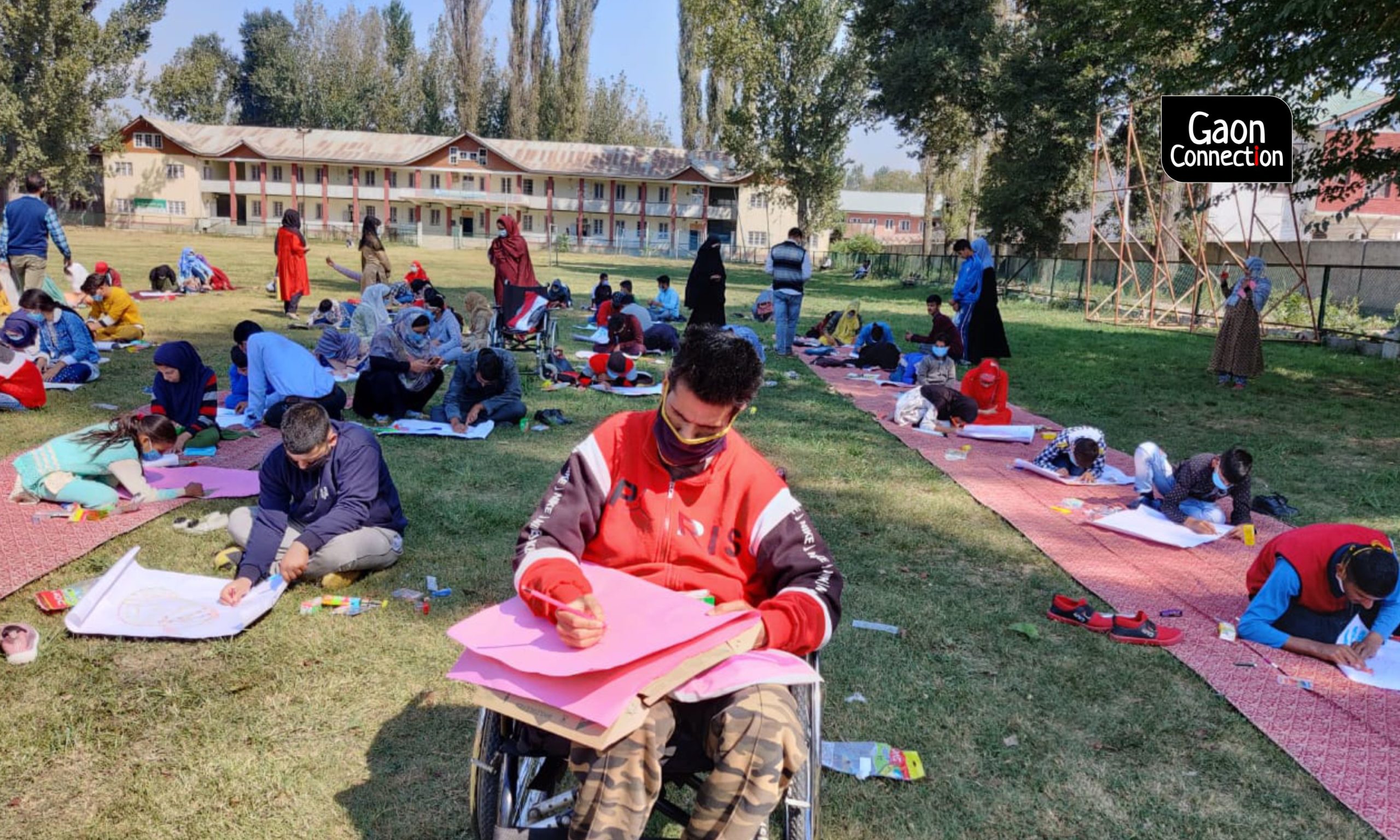
Children with disability taking part in a painting competition organised by a non-profit in J&K.
Srinagar, J&K
It has been eight months now since Iflah Saeed is sitting idle at her home in Dialgam, Anantnag district, 65 kilometres from Srinagar, the summer capital of the Union Territory of Jammu & Kashmir. The eldest of three siblings, the 15-year-old is hearing and speech impaired as is her 14-year-old brother Mehran Saeed, who is studying in class eight.
Iflah’s father, Mohammad Saeed Bhat, had enrolled her in one of the schools in Srinagar’s Solina area meant for disabled children. She passed her class eight exams and was looking forward to continuing her education when COVID-19 hit the country. The global pandemic dashed her hopes and that of her brother.
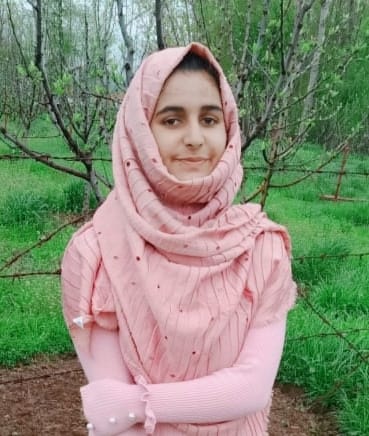
“My two children are not able to learn through online classes because they can’t hear what their teachers are saying. They understand sign language but there is no sign language interpreter for such students in schools,” Bhat told Gaon Connection. He is extremely worried as his children have not gone to school nor been able to attend online classes.
Bhat’s children were studying in south Kashmir at a local school. In order to provide them better education in a Srinagar school meant for disabled children, he rented accommodation there. But after the pandemic broke out, they returned home to Dialgam where the children are sitting idle. “When they have not read a single word how can we expect them to grow in their life? I have made efforts to teach my children, but it all seems in vain,” Bhat lamented.

A press statement, earlier this year, issued by Swabhiman, a Bhubaneshwar-based organisation working for the rights of persons with disabilities, revealed that about 43 per cent of children with disabilities in various states including Jammu and Kashmir are planning to drop out of studies due to difficulties of pursuing online education. There are thousands of children with disabilities in J&K alone whose education has been badly affected by two consecutive lockdowns – first, after the abrogation of Article 370 and then, the COVID-19 pandemic.
“Many children with disabilities, especially those who are visually and speech and hearing impaired, are cut off from education since COVID-19 broke out,” Javaid Ahmad Tak, the chairperson of Humanity Welfare Organization Helpline, an organisation working for the rights of physically challenged children in Kashmir, told Gaon Connection. Forty-four-year-old Tak, who is physically disabled, said that children who are blind and deaf are detached from studies since COVID-19 broke out.
“These children can’t even download the online applications and they are unable to study via online mode as there is no sign language. This has severely affected their mental health,” shared Tak, who is wheelchair-bound himself after a militant- attack in 1997. The schools have reduced the syllabus by 30 per cent, he said, but the move did not take into consideration the needs of children with special needs.
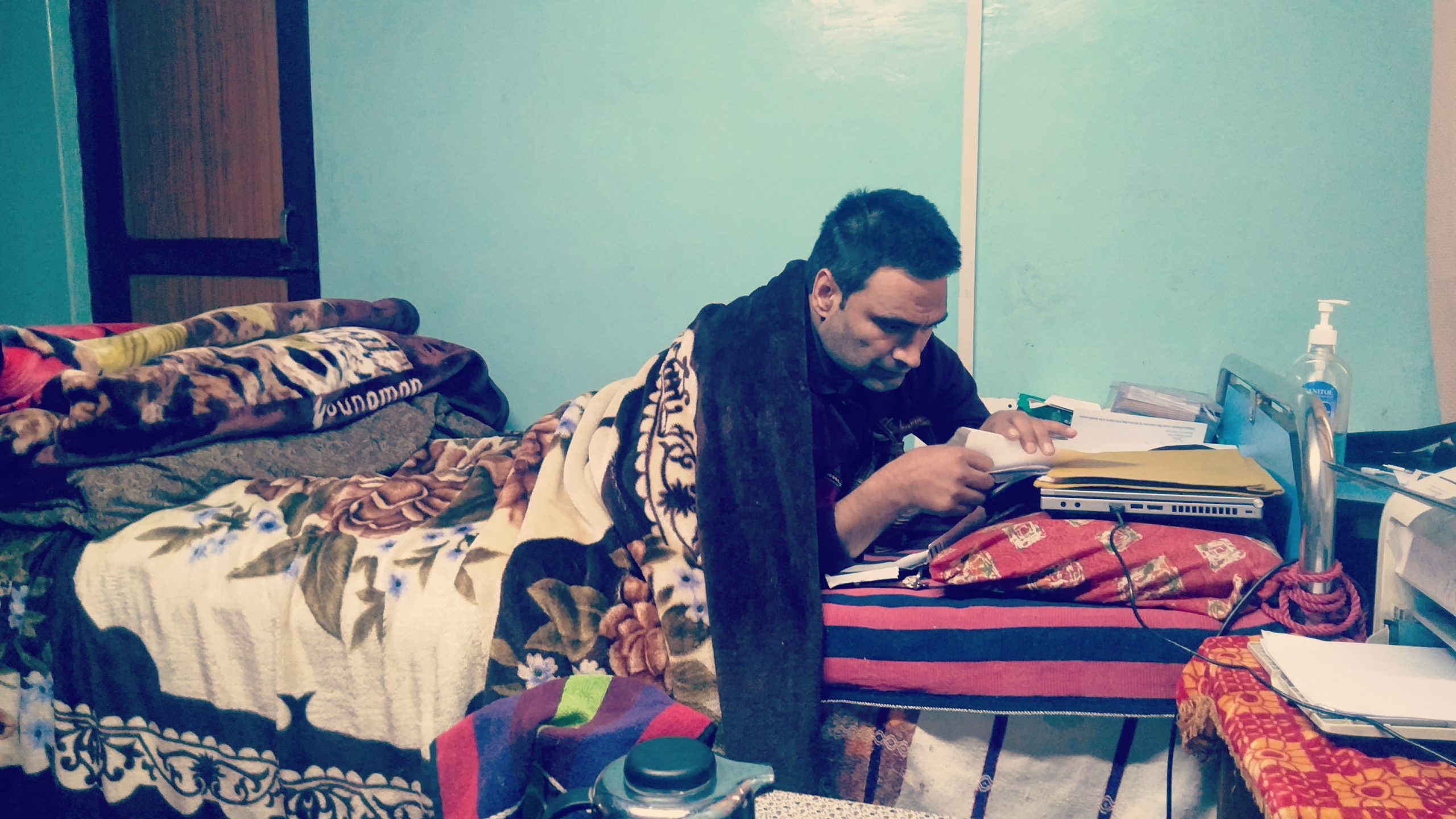
According to the 2011 Census, students with disabilities number about 40 lakh in the age group of 5-19 years. And the pandemic has played havoc with their education.
“The education of children with disabilities has been badly hit in the valley,” Asgar Samoon, principal secretary, who was transferred last month from the Education Department to the Skill Development Department, J&K, admitted to Gaon Connection. He said a lot more special schools should be built to cater to the needs of these children.
Left out and left behind
Quoting from the figures of the Social Welfare Department of J&K, Tak shared that out of 120,000 children with disabilities in J&K, 83,000 students were enrolled in schools. Among them 40,000 are in Kashmir and rest in Jammu and Ladakh. A large proportion of these belong to low-income families who are unable to afford a smartphone for online studies of their children.
Hikmat Syed, a resident of Verinag, Anantnag district about 80 km away from Srinagar, is visually impaired and a student of class nine. Before August 5 last year, when Article 370 was abrogated, she would record lectures of teachers on her mobile and listen to them later at her own pace at home. However, the pandemic has put a brake on her studies. “I could not study since COVID-19 broke out. Education of children with disabilities has been badly hit. We can’t study online,” she regretted.
“She used to have classes in Braille. Even if schools are open, it will be a real challenge for children with disabilities. They will be vulnerable to infections,” Mohammad Yaseen, Hikmat’s father who works at a private medical shop told Gaon Connection.
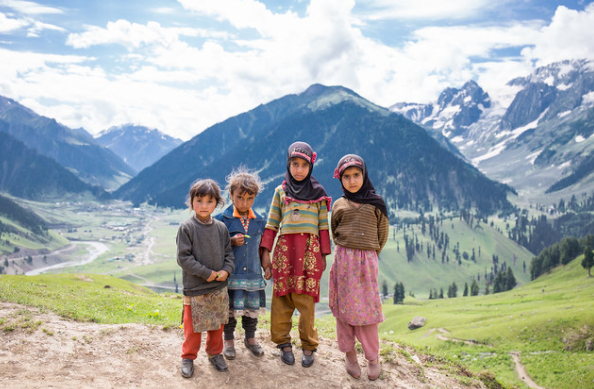
Fifteen-year-old Zehra Manzoor of Kanderpora, Anantnag is visually impaired too and is struggling with keeping up with her studies.
“Zehra is an intelligent child but her education has been severely affected due to this pandemic,” her uncle said. “When children without disabilities are unable to study online how can one expect children with disabilities to study efficiently through this virtual medium?” he asked.
Responding to the challenge
The J&K government had earlier appointed 58 resource persons under a centrally sponsored scheme who were responsible for teaching disabled children in schools. But the ratio of teachers to students with special needs in Jammu and Kashmir is inadequate. The Union Territory had just 27 resource persons and 58 special educators to work with children with special needs, and these teachers are available only in a few schools. “Most among them left as they were paid meager salary and preferred to work in other departments,” said Tak.
“Our school was holding classes for students of Class 9 and 10 on alternate days to complete the syllabus,” said Tak who started the Zaiba Aapa Institute of Inclusive Education in Bijbehara, which caters to the educational, vocational and rehabilitation needs of persons with disabilities. Around 250 students have directly benefited from this institution while 10,000 children with different disabilities were also helped by it. He said there should be special schools in every district for disabled children.
Recently, the non-profit Humanity Welfare Organization Helpline in collaboration with the Bengaluru-based Azim Premji Philanthropic Initiatives, organised an inclusive drawing competition at the Government Degree College, Anantnag. A cricket match was also played between cricketers with visual impairment.
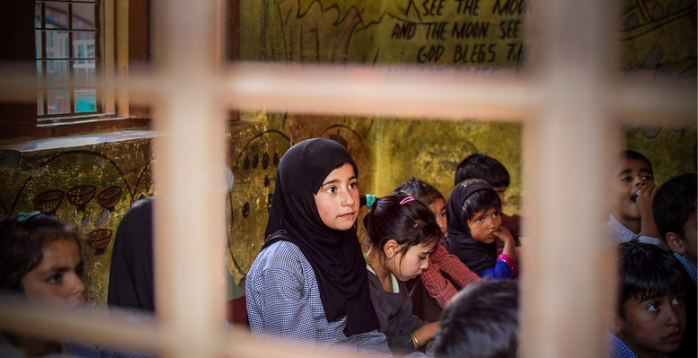
The deal breakers
The lack of access to online platforms is a big hurdle in ensuring that children with disabilities are not left behind in their lessons. Providing the children digital access will assist them in keeping up and open up opportunities for them.
There is a comprehensive policy on making education inclusive in India. The PM eVidya platform also assured to reach out to students with visual and hearing impairment. However, between the policies and their implementation, there is a huge chasm. There is an urgent need for the various government departments like the Ministry of Human Resources Development, Department of Empowerment of Persons with Disability and The Telecom Regulatory Authority of India to be on the same page to bring about clarity on policies, implementation of schemes on ground and training of teachers and other stakeholders, etc, in order to bring about inclusivity effectively. There has to be a holistic and comprehensive approach to inclusivity, wrote Kadambari Agarwal, a research Assistant at Nyaaya, an initiative of Vidhi Centre for Legal Policy.
This story has been sourced from Charkha Features.

